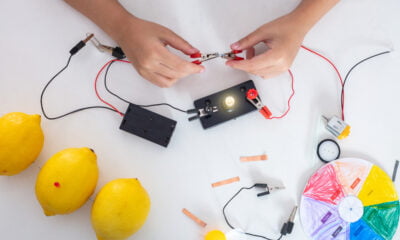

Energy
Connected lighting: the smart revolution
Connected lighting is the smart revolution gathering pace across the world, writes Mark Sait.
Also known as lighting 2.0, connected lighting is the next stage in the rapid evolution of technologies underpinning the way we illuminate our public and private spaces.
The revolution is underway – smart luminaires are being installed in a range of settings and leading manufacturers are stepping up a gear to meet the challenge.
The smart luminaires already developed, and those in design, do more than just light up a space. They are fitted with sensors and connected to networks so they are able to monitor, measure and control.
We think that smart light fittings could signal the demise of the traditional standalone luminaire, simply because the commercial and environmental benefits are so great. Clearly, this will take time but the barriers to adoption are not big and forward-thinking companies, organisations and consumers will be integrating connected lighting into their plans.
Two integrated elements are driving the connected lighting revolution: wireless and smart mobile devices. Wi-Fi, Bluetooth and ZigBee have matured as connectivity solutions, providing an increasingly essential means through which we communicate. These technologies are becoming ubiquitous simply because they support richer, more fluid and effective ways of working and living.
The three connectivity technologies are now found in many mobile devices, making them easier to use while adding greater functionality. Smartphones and tablet computers have begun to evolve into control devices, which is good news for the lighting industry.
It means that lighting products can benefit from the move towards wireless connected systems. Wireless makes the control of lighting easier but also extends the range of functions while helping to reduce energy consumption.
Another crucial driver in this lighting revolution is the rapid adoption of LED lighting. LED technology, with smart potential in the core design, is already enabling the development of exciting functionality, which will demand innovative control mechanisms.
For example, users can use their smartphone or tablet on wireless networks to switch, dim, change colour and make group colour settings. At the far end of connected lighting development, Newark Airport in the US uses connected luminaires as part of a pioneering wireless network that can monitor the movement of people and vehicles, and even ‘suspicious activity’. The data can, in turn, be mined to detect patterns using technology.
The Connected Lighting Alliance, which includes Philips and Lutron, two leading suppliers we work closely with, encourages the development of solutions that adhere to open standards, which is pretty crucial for successful interoperability. The vision is to promote and support a robust wireless lighting control environment, including component suppliers, solution providers, standards development bodies and compliance testers.
The alliance should be successful in its aims and so ensure that the lighting industry has a unified approach towards wireless connectivity, helping to reduce development and production costs. It should also reinforce connected lighting as a low-risk choice for all consumers, which will speed adoption.
The connected lighting revolution is a keynote theme at the International Lighting Fixture Design conference in London’s Cavendish Conference Centre on June 4-5 and Lux magazine publisher Ray Molony advises that it should “give delegates a valuable heads-up on the connected lighting world, and a raft of other challenges facing lighting manufacturers”.
LED lighting has been a spectacular success by every benchmark – we think that connected lighting will take this revolution several gigantic steps forward.
Mark Sait is managing director of SaveMoneyCutCarbon.
Photo: Alexander Kandler via freeimages
Further reading:
The real green deal: bringing energy, water and waste under control
88% of UK households buying energy saving lightbulbs
Survey reveals public’s misconceptions on energy saving and efficiency
Digital energy: how can web technology be used for energy behaviour change?


 Environment10 months ago
Environment10 months agoAre Polymer Banknotes: an Eco-Friendly Trend or a Groundswell?

 Environment11 months ago
Environment11 months agoEco-Friendly Home Improvements: Top 7 Upgrades for 2025

 Features9 months ago
Features9 months agoEco-Friendly Cryptocurrencies: Sustainable Investment Choices

 Features10 months ago
Features10 months agoEco-Friendly Crypto Traders Must Find the Right Exchange





























